Guoshou rice noodles: A snack on your palm
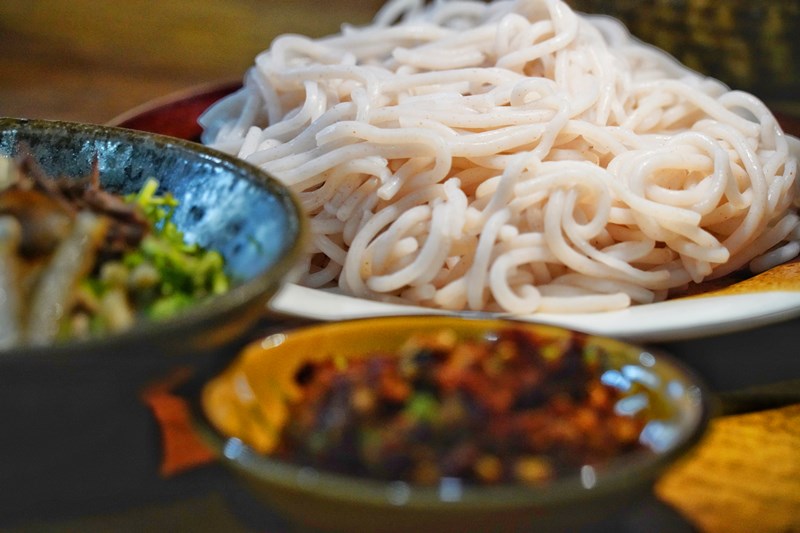
“Our Guoshou rice noodles have to be enjoyed by hand rather than chopsticks. Only in this way, one can feel their true deliciousness,” says Lin Zhengliang, a cook and local restaurant owner in Dehong prefecture, Western Yunnan province. We apparently know that eating by hand won’t change the taste of food. What is behind this highly ritualized form of eating, as a matter of fact, are the hospitality of Achang people — an ethnic group native to Dehong — and their unique culture.
The Guoshou rice noodles, as a traditional snack of Achang people, is originated from Sahu village in Longchuan county, Dehong. “Guoshou”, literally meaning “eating by hand” in Mandarin, is the primary feature of this dish. In 2018, Guoshou rice noodles appeared in “Once Upon a Bite”, a documentary series directed by Chen Xiaoqing, one of China’s most recognized documentary directors specializing on food culture. It’s not surprising that from then on, this snack has gained much popularity nationwide.
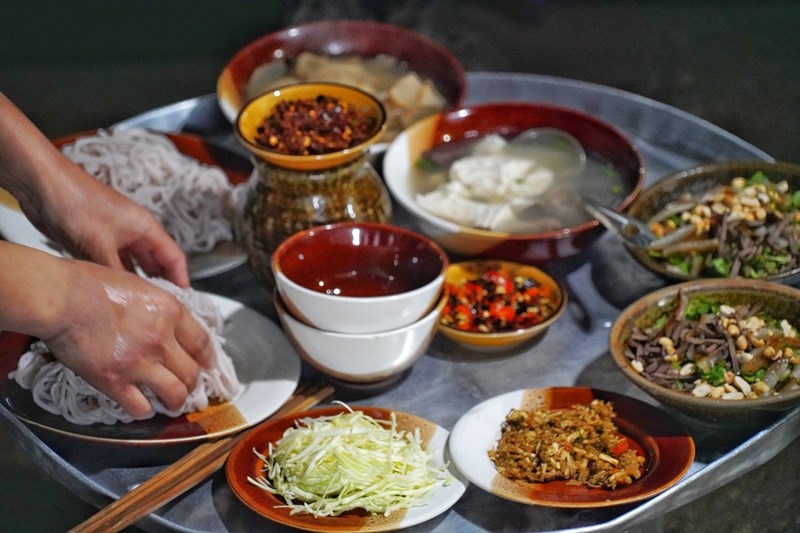
Two decades ago, Lin left Longchuan — his hometown — for Mangshi, the capital city of Dehong prefecture which lies on the border with Myanmar. He soon opened up a small restaurant, selling authentic Guoshou rice noodles. Today, his place has become one of the most well-known eateries across Dehong.
Every day when the night falls, Lin Zhengliang begins to work in his kitchen. The sound of chopping can be heard afar. Entering the kitchen, we see Lin sitting aside a stove and grilling sliced pork which is essential to Guoshou rice noodles. As the meat sizzle over fire, a very alluring smell starts to diffuse in the air.
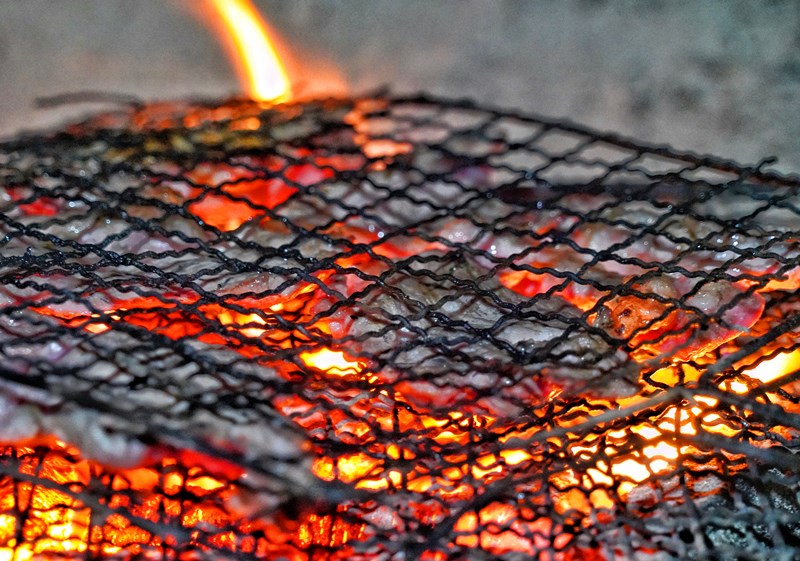
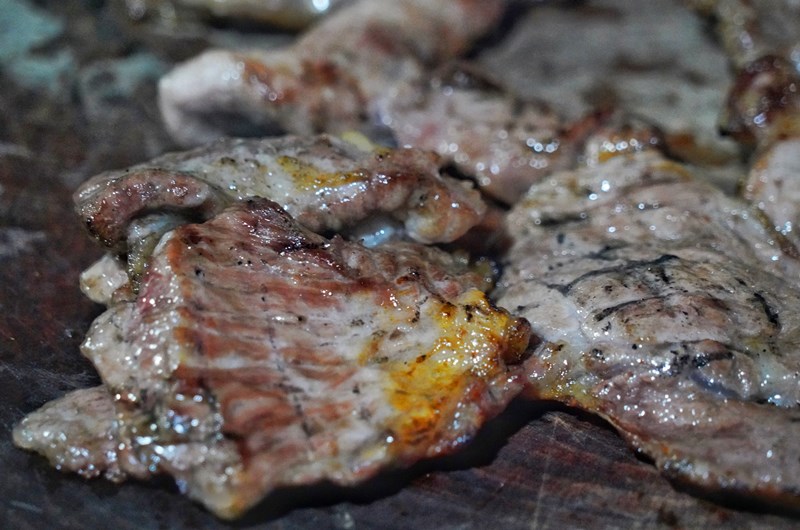
He then moves the pork slices onto a wooden chopping board, cutting them into smaller cubes immediately while the meat is still hot and sizzling. Now, the meat is ready to be placed into a big bowl and mixed with a number of other ingredients, including garlic cloves, peanuts, cilantro, pork liver, salt as well as xidoufen, a puree made from peas. These are all he needs for preparing authentic Guoshou rice noodles.
Lin stirs all ingredients in the bowl clockwise with a pair of chopsticks. As an experienced cook who has ran his restaurant for years, he is more than clear that this is the best way to combine pork, the pure and every other ingredient together. “If I don’t follow this rule, the snack would turn out differently which cannot be called Guoshou rice noodles anymore,” he says seriously.
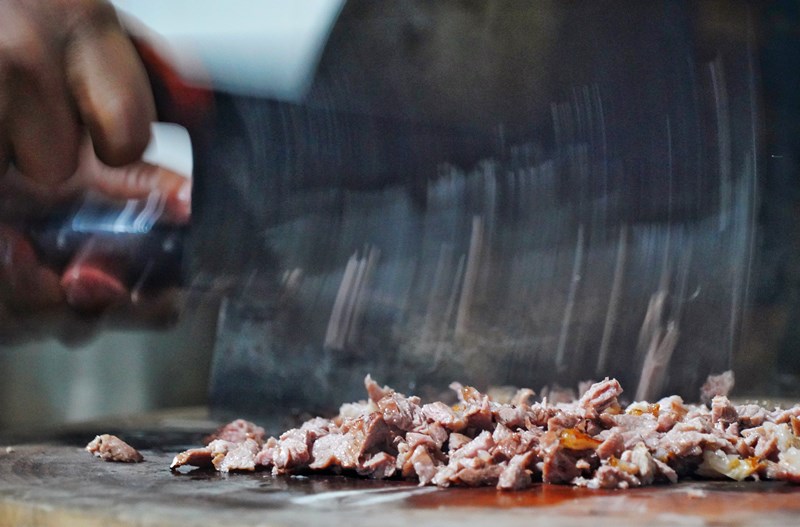
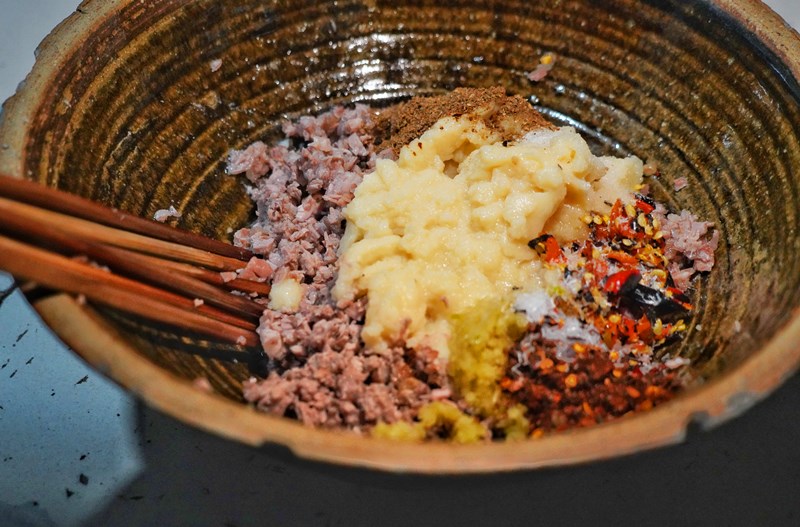
Before serving, Lin adds a spoon of suanshui (literally meaning acid water) which is a fermented liquid extracted from radish leaves into the bowl. It is worth mentioning that suanshui, despite of its slightly awkward smell, is key to Guoshou rice noodles since it offers a unique flavor to the entire dish.
As two bowls of Goushou rice noodles come onto the table, Lin starts to show us the authentic way to eat them in Dehong. He grabs some rice noodles, placing them on his palm before adding other ingredients we mentioned above on top.

“Our Guoshou rice noodles have to be enjoyed by hand rather than chopsticks. Only in this way, one can feel their true deliciousness,” says Lin Zhengliang. We apparently know that eating by hand won’t change the taste of food. What is behind this highly ritualized form of eating, as a matter of fact, are the hospitality of Achang people — an ethnic group native to Dehong — and their unique culture.
“I have welcomed numerous tourists in recent years. They are not only impressed by the taste of Guoshou rice noodles, but the cultural elements of Achang in my little restaurant,” Lin tells us.
Writing by Duan Jianxin; trans-editing by Wang Jingzhong; photographs by Liu Jiatong